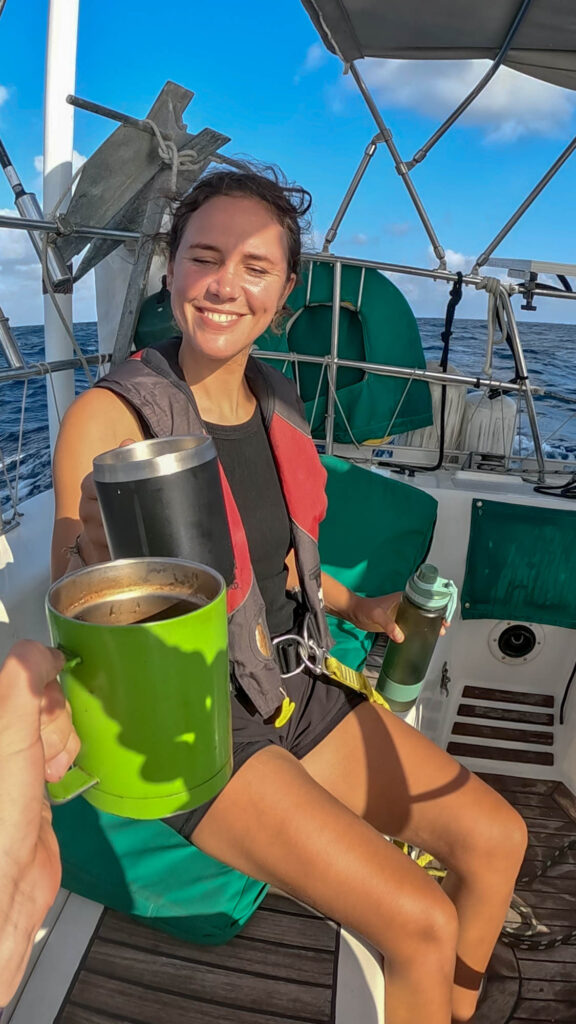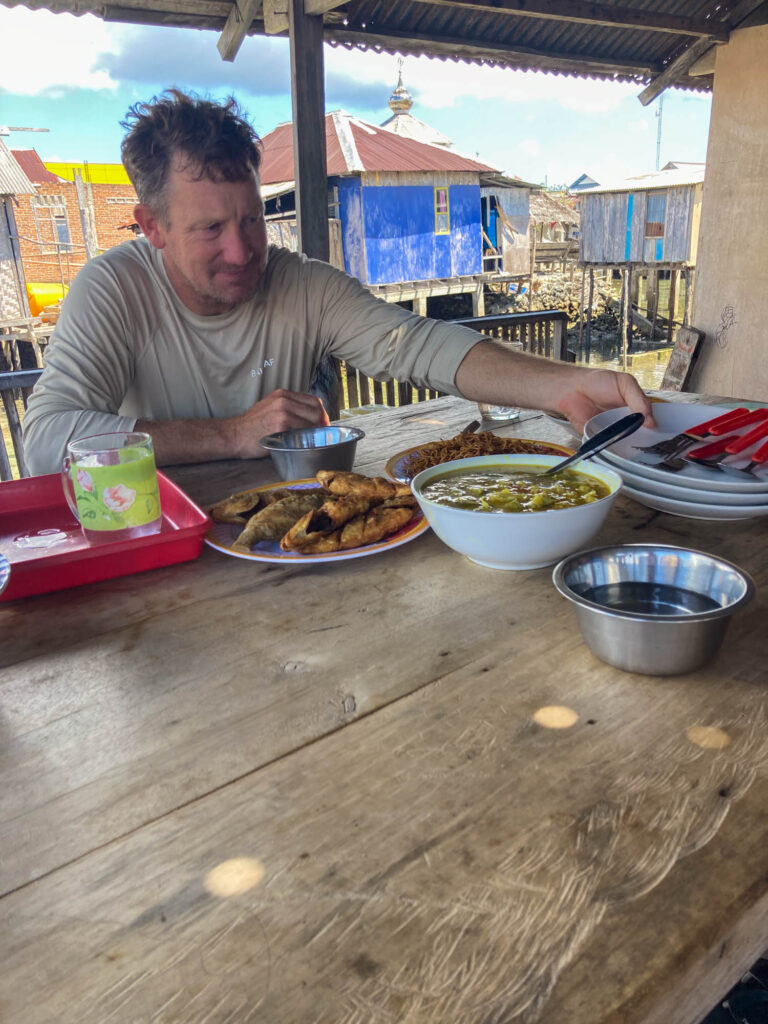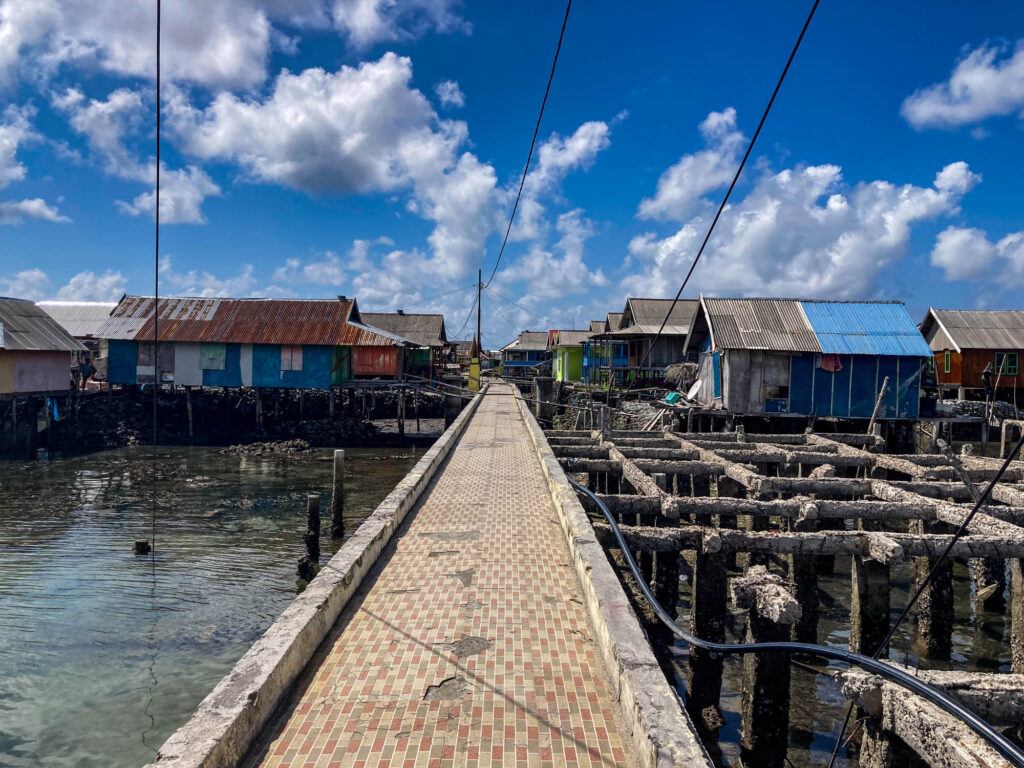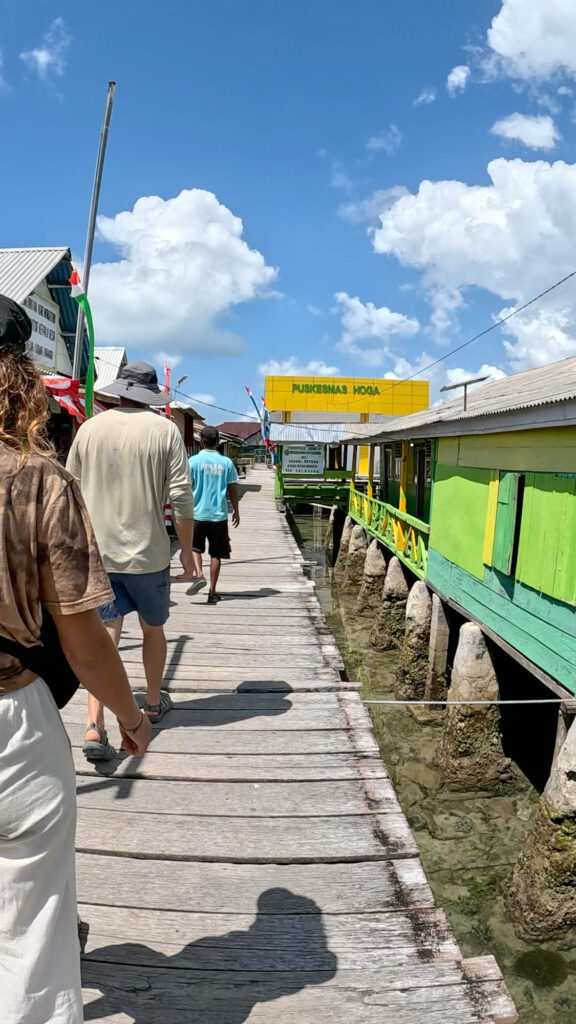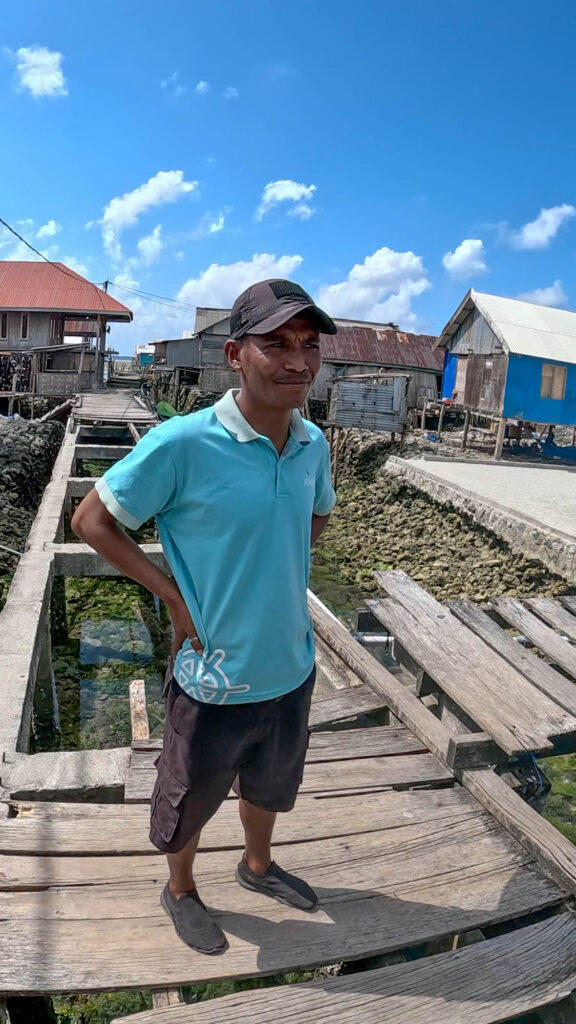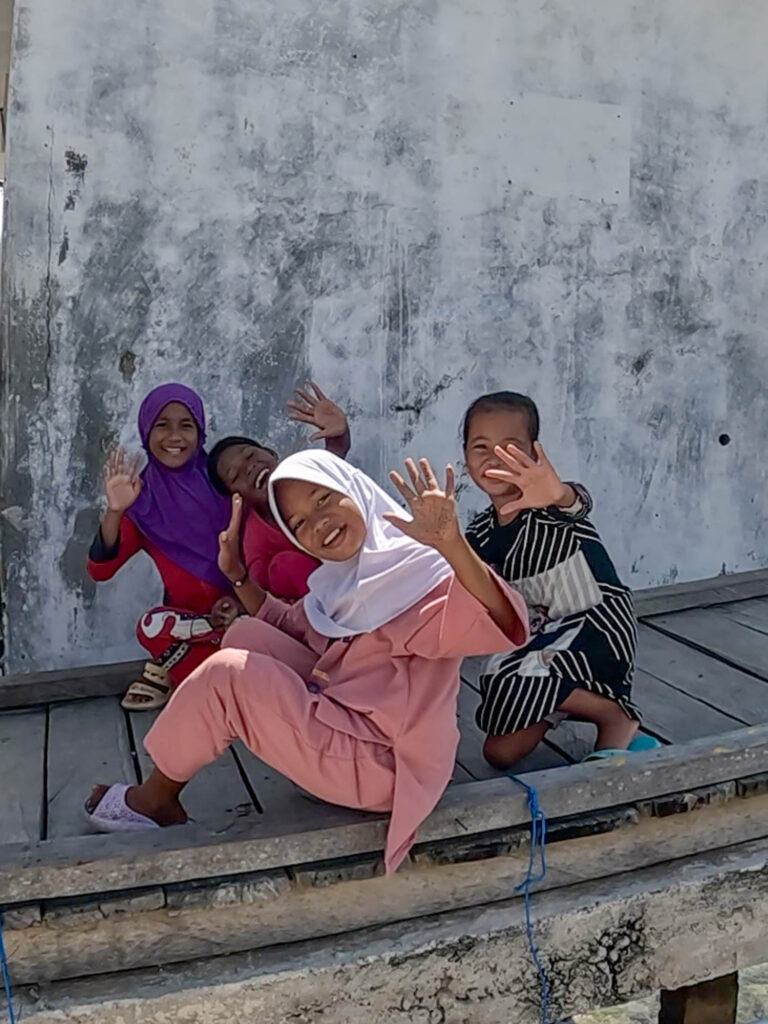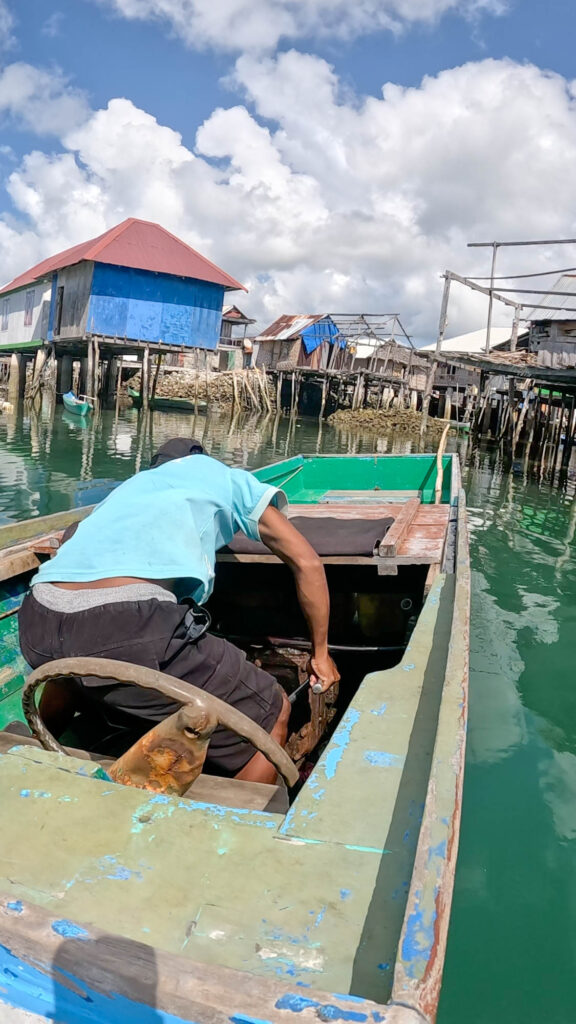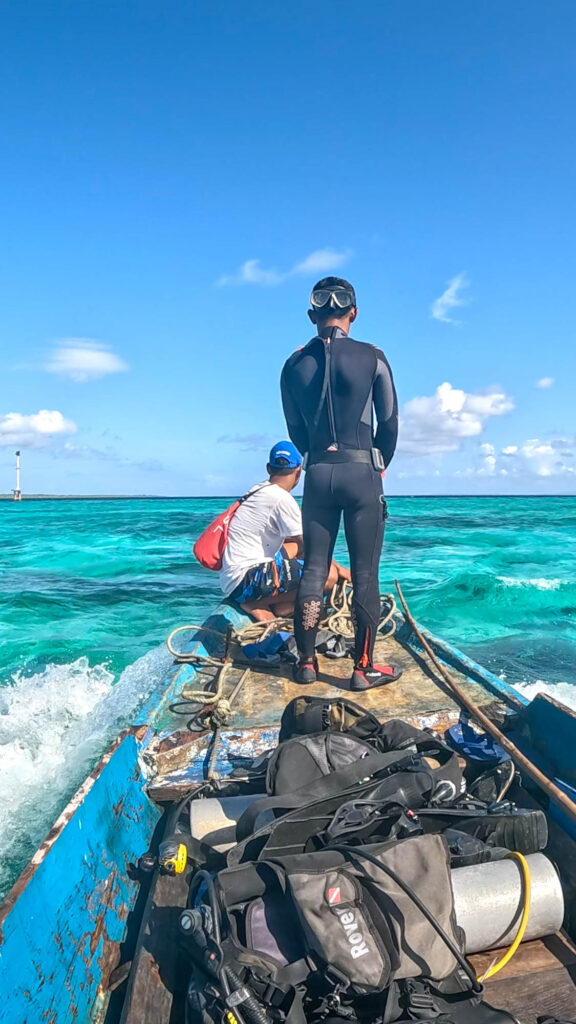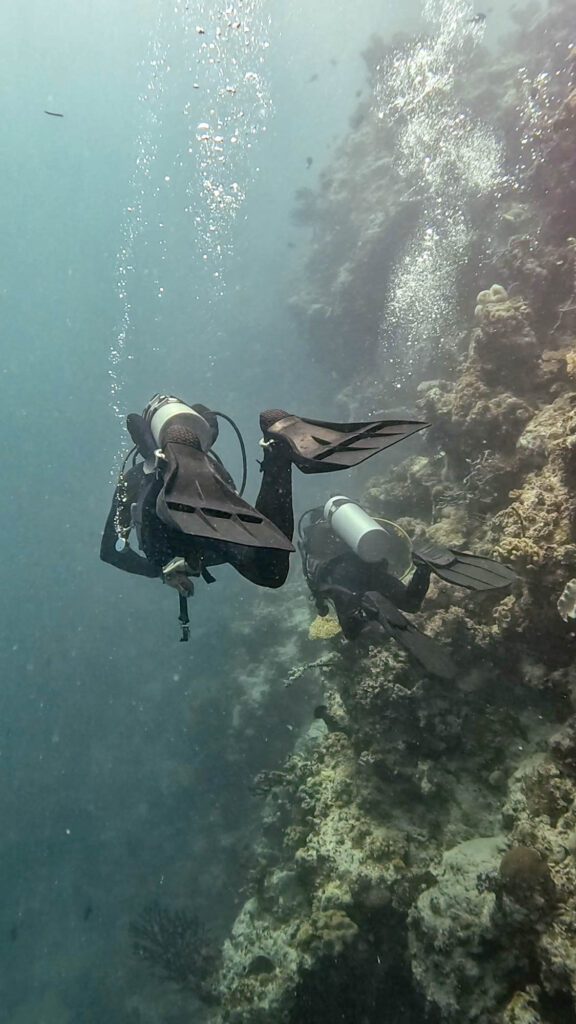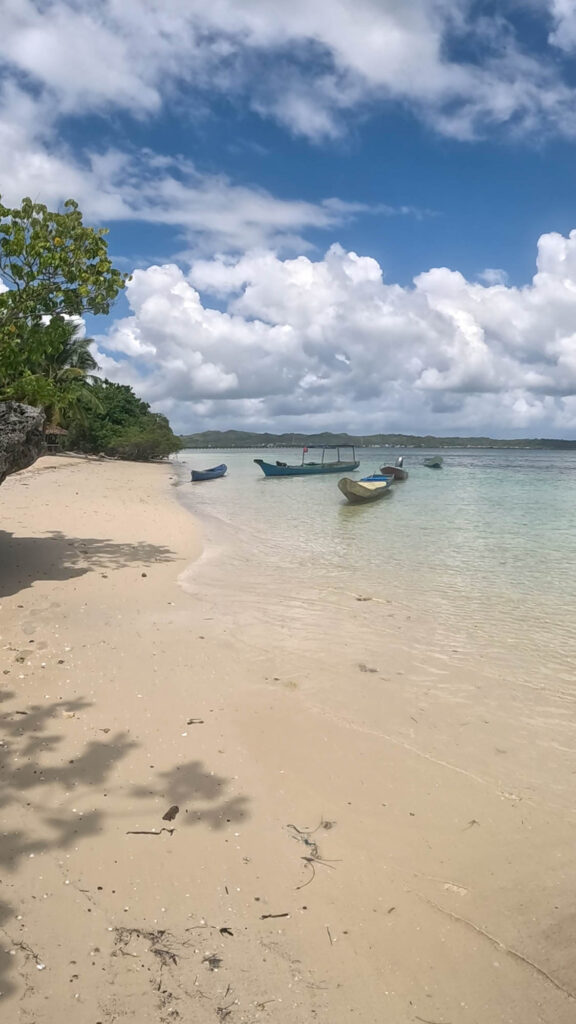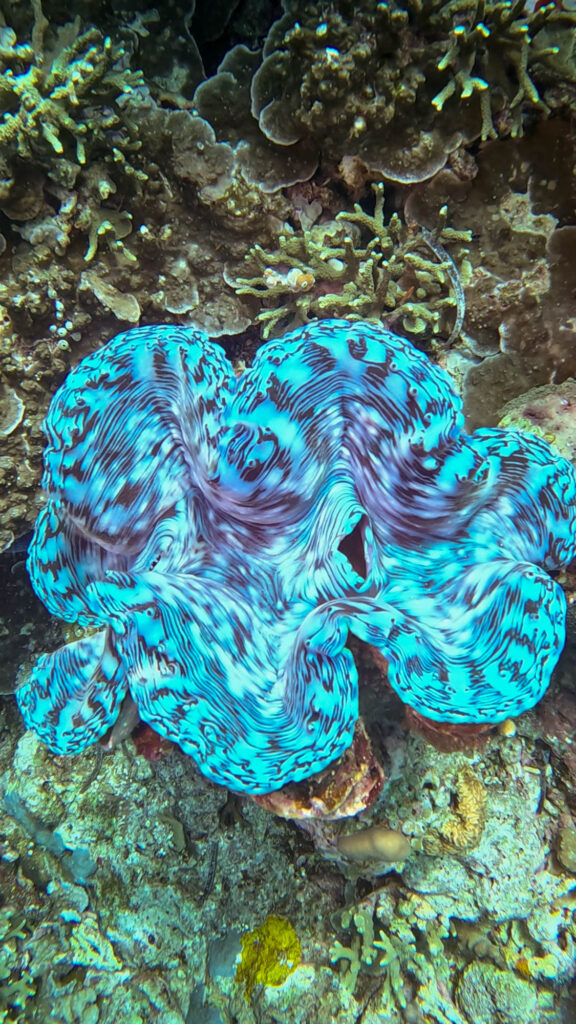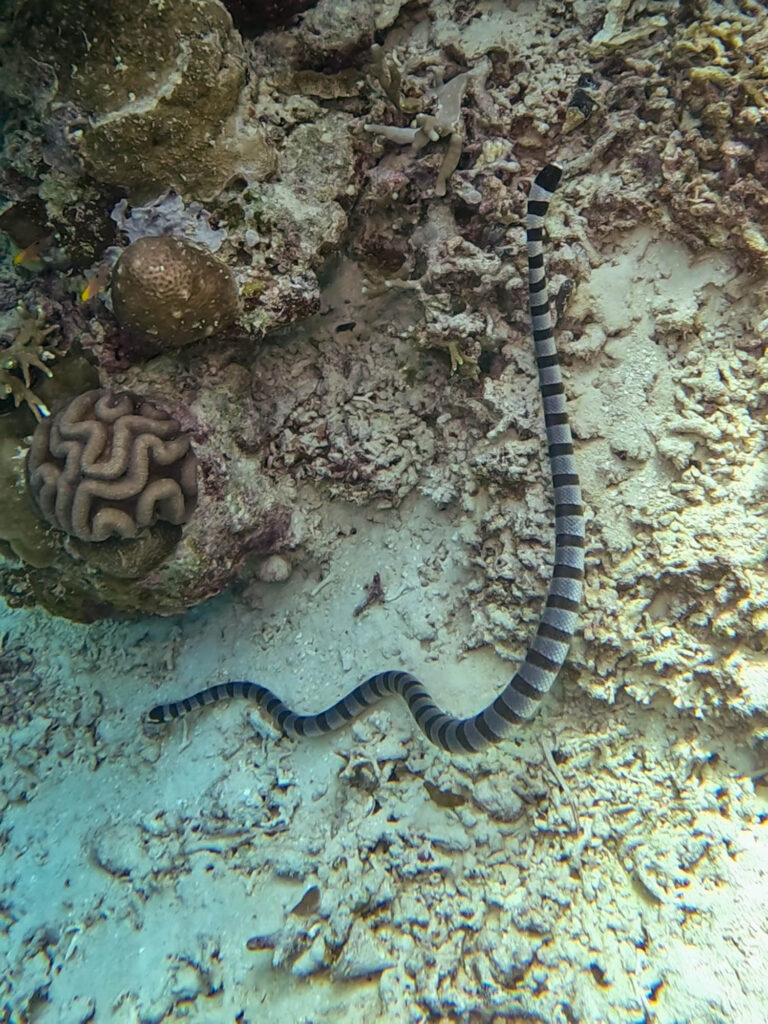After two days of passage, we arrived in Wakatobi National Park which is a collection of islands off the southeastern coast of Sulawesi. If you search where’s the best diving in Indonesia, you’ll often find Wakatobi in the top three destinations, next to Raja Ampat and Komodo. Needless to say, I was excited to do some more diving.
With just four days to explore, based on my research I suggested we anchor off of Hoga Island for the first two nights, then Tomia Island for the second two. We arrived at Hoga Island at sunrise and dropped anchor, ready to catch up on some sleep. As soon as we settled in, we heard a knock on the hull. A local man named Dan was outside, asking if we would want to come to the local fishing village for lunch and a tour. We were pleasantly surprised by the hospitality and agreed on a time for him to pick us up in the early afternoon.
Later that day, Dan returned in his long and narrow boat, powered by a noisy, single-cylinder diesel engine. We managed to get in the boat without tipping it over and motored to the nearby village of Sampela, built entirely above water. He guided us through the labyrinth of elevated walkways between buildings and we were greeted by locals as we made our way to his home. We sat down for lunch and his wife began serving us rice, boiled vegetables, and fish.
Sampela is a fishing village of around 2,000 Bajo people, known as sea gypsies. From what I came to understand, the Bajo people exist between islands, often leaving them without a national identity, similar to what I had seen in Borneo. Historically, these sea people did not have rights to land so instead, they built structures over shallow reef areas. This village had grown to encompass about 30 acres.
Dan walked us through the village for a brief tour and some young boys followed us around, wanting to show off a mixture of dance and karate skills, then asked if we wanted to take pictures with them. The enthusiasm of the locals to greet us seemed a little suspicious and I got the feeling the village probably sees a fair amount of tourism there. Then, we were taken back to SV Kismet and paid Dan his asking price for lunch and the tour, $15 per person which seemed a bit steep considering Joni’s entire birthday dinner was $10 for the three of us just a few days before.
Then, Dan asked if we had any diesel we could spare. Unfortunately, we had already emptied our jerry cans into the tank and didn’t have any fuel easily accessible. Dan looked disappointed and continued to insist, saying he wasn’t sure if he had enough fuel to motor back to the village. We gave him a little more cash to send him on his way but the entire experience of the day rubbed me the wrong way. I later wrote of this experience on the online cruising forum and found that several other people had the exact same experience, and it was likely a ploy to get more money out of us.
The next day, I had scheduled two dives with a local guide who picked us up in the morning with another, very narrow boat. I was concerned we would tip the entire thing with just our back-roll entries. It was another fun day of diving and I was most excited about the number of sea snakes we saw. Banded sea kraits are about 10 times more venomous than a rattlesnake but completely docile when left undisturbed in the water. I loved watching them wind their way through the reef, hunting, then coming up for a breath and gracefully zig-zagging back down.
We stayed at the anchorage in Hoga for two nights before departing for a neighboring island. Before continuing with the story, I’d like to fast-forward to two months later when I began receiving text messages from Dan. Dan started sending me pictures of fish they had been catching at the local village. I assumed it was to get me to come back and visit or tell our other sailing friends to go visit. I never responded to any of the messages until I received a photo of what appeared to be a large shark tail, tied up out of the water with the rest of the body submerged and several villagers gathered around.
I responded to the photo with two question marks and received a 2-minute long video in return. The tail wasn’t of a shark but of a dougong (sea manatee), tied up in the village. To say I was horrified and disgusted would be an understatement. I tried to ask why he was sending this to me but received no response. Given our previous interaction, I could only rationalize that he thought keeping a wild dugong as a pet would attract more visitors to the island. I messaged him back trying to explain that I was very upset and would tell my other sailing friends not to visit. I also tried to explain people would like to see dugongs living happily in the wild, never in captivity. Still no response.
I couldn’t sleep at night knowing this poor creature might be tied up in this fishing village and needed to do something. So, I posted the photo on the Facebook group for sailing in that area and asked others to consider this interaction before visiting the village and interacting with Dan. I was shocked at the response I received. Some people called the moderator to take the post down and others asked why this single dugong was an exception to the thousands of dolphins slaughtered in the Faroe Islands each year.
One person responded suggesting I contact the Indonesia Marine Mammal In Distress Hotline. Thankfully, they responded quickly and I sent over the picture, video, and any other information I could provide. The organization contacted the national park office which sent someone over to investigate since keeping a dugong in captivity is illegal in Indonesia. The story they collected was that the dugong was found in one of their fishing traps, dead or close to dead, and they decided to tow it back to the village which is the scene that I had witnessed. They claimed they were going to bury it which didn’t make much sense to me considering the village is constructed above water. So, it appeared the dugong had likely died of stress or starvation which, I suppose, sounds a little more peaceful than tied up in a fish village.
The whole situation left me feeling disturbed. It’s no surprise with reefs on the decline as a result of pollution, climate change, and unsustainable marine practices, villages like this are struggling to make an income from fishing and are forced to look for alternative sources of income elsewhere. If this village can attract visitors, it’s a way for them to make money, even if it means trapping a dugong and sending pictures to tourists. As tourists, our dollars have a vote and it’s our responsibility to educate local people on what tourist practices are acceptable.
